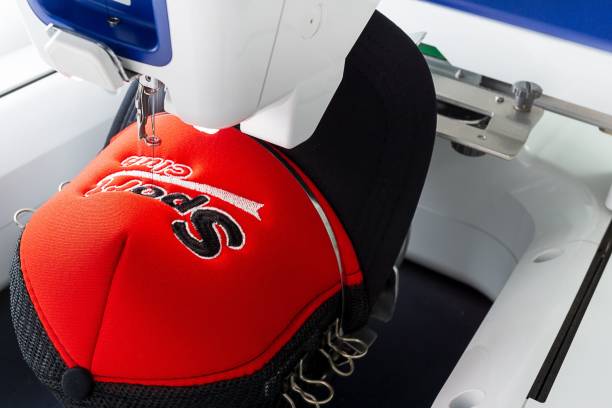Top Tips for Perfect Custom Embroidery Digitizing

Custom embroidery digitizing is a meticulous craft that merges technology with traditional artistry, allowing for the creation of intricate and personalised designs on various textiles. Whether you’re a seasoned embroiderer or just starting, achieving perfection in digitizing is the key to creating stunning embroidered pieces. In this article, we’ll delve into the top tips and techniques to help you master the art of custom embroidery digitizing, ensuring every stitch is flawless and every design is impeccable.
Quality Source Images and Design Preparation:
The foundation of excellent custom embroidery digitizing for business lies in the quality of the source image. Start with high-resolution photos or vector graphics to ensure clarity and precision in your designs. Prioritise clean, well-defined lines and minimal shading for optimal results. Additionally, invest time preparing your design by removing unnecessary elements, adjusting colours, and simplifying complex details to translate seamlessly into embroidery.
Mastering Stitch Types and Directional Techniques:
Understanding different stitch types and directional techniques is crucial for achieving texture, depth, and dimensionality in your embroidered designs. Experiment with various stitch types such as satin, fill and run stitches to create different effects and textures. Pay attention to stitch directionality, as it can influence the final appearance of the design—Utilise underlay stitches to stabilise the fabric and improve the overall quality of the embroidery.
Customisation and Fine-Tuning:
Customisation is critical to elevating your digitized designs from good to exceptional. Take advantage of features like density adjustment, stitch angle control, and stitch length modification to fine-tune your designs according to the specific requirements of each project. Pay attention to details such as stitch density, underlay settings, and pull compensation to ensure optimal stitch quality and durability, especially when working with different types of fabrics.
Testing and Prototyping:
Before finalising a production design, it’s essential to conduct thorough testing and prototyping. Use scraps of fabric similar to the final product to test your digitized design, ensuring that the stitch density, thread tension, and overall appearance meet your expectations. Prototyping allows you to identify potential issues or areas for improvement before committing to the final embroidery, saving time and materials in the long run.
Proper Hooping and Stabilisation Techniques:
Proper hooping and stabilisation are fundamental to successful embroidery digitizing. Ensure the fabric is securely hooped to prevent shifting or puckering during embroidery. Use appropriate stabilisers based on the fabric type and design complexity to support and maintain the integrity of the stitches. Experiment with hooping and stabilisation techniques for optimal project and fabric results.
Colour Management and Thread Selection:
Effective colour and thread selection are critical for bringing your digitized designs to life. Use colour management tools and techniques to pay attention to colour accuracy and consistency across different platforms and devices. Select thread colours that complement your design and fabric, considering thread weight, sheen, and colourfastness. Experiment with thread combinations and shading techniques to add depth and visual interest to your embroidered designs.
Continuous Learning and Professional Development:
Embroidery digitizing is a dynamic field with constantly evolving technologies and techniques. Stay abreast of industry trends, attend workshops, and seek continuous learning and professional development opportunities. Join online forums and communities to connect with fellow embroiderers, share knowledge, and exchange tips and tricks. Embrace a growth mindset and approach each project as an opportunity to learn and improve your digitizing skills, ensuring that your work remains fresh, innovative, and of the highest quality.
Quality Control and Inspection:
After completing the digitizing process and embroidering your design, thorough quality control and inspection are crucial. Carefully examine the embroidered piece for defects like missed stitches, thread breaks, or tension issues. Use magnification tools if necessary to ensure precision and accuracy in the stitching. Address any imperfections promptly, whether through manual adjustments or revisions to the digitized file, to maintain the integrity and professionalism of your work.
Documentation and Version Control:
Maintaining accurate documentation and version control is critical for digitizing projects efficiently and effectively. Keep detailed records of each project, including the source files, digitized designs, and any revisions or modifications made throughout the process. Implement version control systems to track changes and updates, ensuring you can quickly revert to previous versions if needed. Organise files systematically and back up data regularly to prevent loss or corruption of valuable digitized designs and project assets.
Customer Satisfaction and Feedback Loop:
Ultimately, the success of your custom embroidery digitizing endeavours hinges on customer satisfaction and feedback. Prioritise delivering high-quality work that exceeds customer expectations and leaves a lasting impression. Solicit feedback from clients and recipients of your embroidered pieces to gain insights into areas for improvement and opportunities for innovation. Listen to customer input, incorporate suggestions, and continuously refine your digitizing techniques and processes to enhance customer satisfaction and loyalty.
Conclusion:
Custom embroidery digitizing requires patience, practice, and a keen eye for detail. By understanding the fundamentals of file formats, selecting the right software, and honing your skills in design preparation, stitch types, and customisation, you can unlock the full potential of your embroidery projects. You can create stunning embroidered pieces that leave a lasting impression with dedication and perseverance.
Embroidery digitizing is a blend of creativity and technical proficiency, and by implementing these top tips, you’ll be well on your way to achieving perfection in your custom embroidery endeavours. So, roll up your sleeves, thread your needle, and let your imagination soar as you master the art of digitising custom embroidery.




